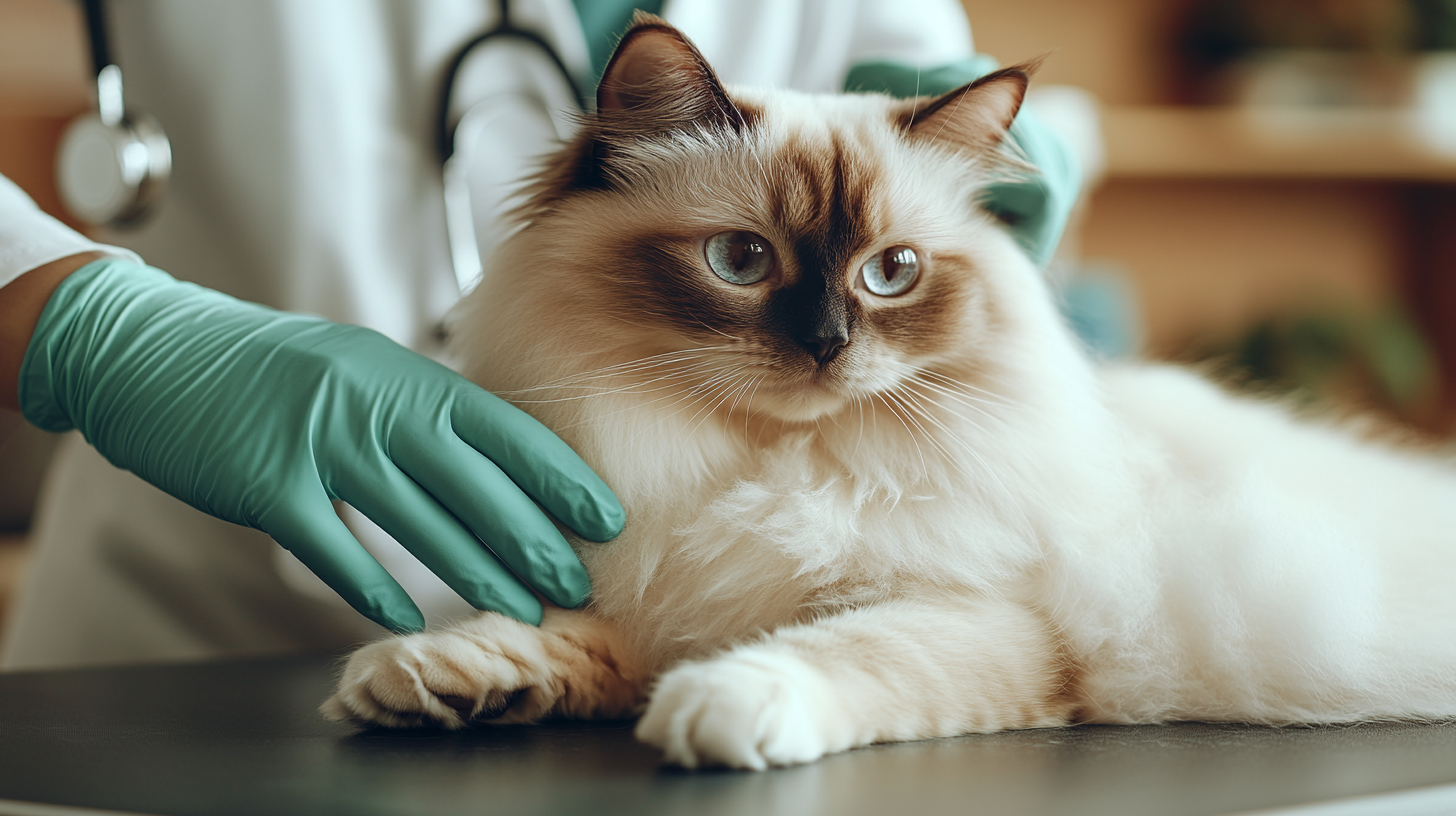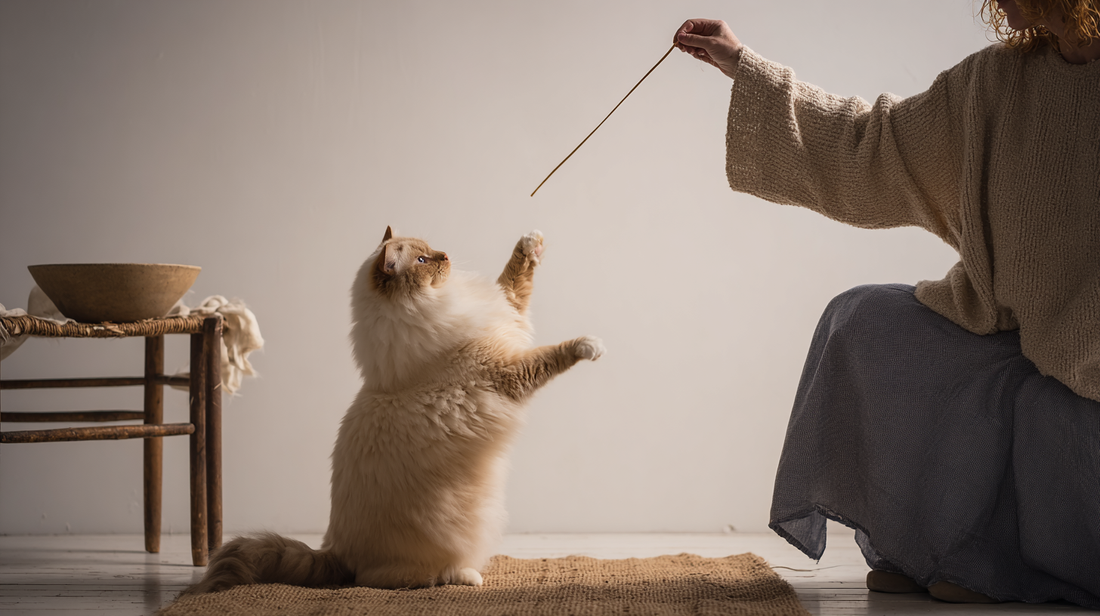As a loving cat parent, witnessing your feline companion's urinary discomfort can be deeply concerning and stressful. When your cat makes frequent trips to the litter box with little result, strains uncomfortably, or leaves accidents around your home, these behaviors signal a potential health issue that requires attention.
These are common signs of Feline Idiopathic Cystitis (FIC). This condition is a frequent reason cat owners seek veterinary help, and while the exact cause remains somewhat mysterious, understanding FIC and how to manage it is crucial for bringing comfort back to your beloved cat.
Summary
What exactly is Feline Idiopathic Cystitis (FIC)?
Feline Idiopathic Cystitis is an inflammation of the bladder in cats. The term "idiopathic" means that despite thorough veterinary investigation, the underlying cause of the inflammation remains unknown. Unlike other urinary issues where we can identify a clear culprit like a bacterial infection or bladder stones, FIC presents a challenge because we can't pinpoint one specific trigger in every cat.
Your veterinarian will arrive at a diagnosis of FIC by ruling out other potential health problems that can cause similar urinary signs. This "diagnosis by exclusion" ensures that your cat's discomfort isn't due to a urinary tract infection, crystals or stones in their bladder, or other underlying medical conditions.
Recognizing the signs: What to watch for
Identifying FIC signs early is vital for getting your cat the help they need. Common clinical signs include:
Frequent, often unproductive trips to the litter box (pollakiuria)
Spending longer time in the litter box, straining to urinate
Signs of pain during urination (Stranguria), such as vocalizing or unusual posture
Urinating outside the litter box (Periuria), which isn't misbehavior but an indication of discomfort
Blood in the urine (Hematuria), which is common with bladder inflammation
Excessive licking of the urinary opening due to irritation
These signs can be quite variable, appearing suddenly, disappearing, and then recurring without an obvious pattern. This waxing and waning nature of FIC can be particularly frustrating for both you and your cat.

Understanding risk factors that might contribute to FIC
While the exact cause of FIC remains elusive, research has identified several risk factors:
Stress is one of the most significant factors implicated in FIC. Age also plays a role, with middle-aged cats frequently affected, while neutered status may put cats at higher risk.
Obesity has been linked to increased incidence of FIC. An indoor lifestyle and reduced physical activity are suggested as potential contributing factors.
Finally, diet is important—primarily feeding dry food may be a risk factor, related to lower overall water intake and more concentrated urine.
How stress affects your cat's urinary health
Cats, despite their seemingly independent nature, are quite sensitive to changes in their environment and daily routines. When your cat experiences stress, it can trigger a cascade of physiological responses that may contribute to bladder inflammation in susceptible individuals.
Common stressors for indoor cats include: changes in the home environment (such as new furniture, renovations, or rearranging items), introduction of a new pet or person into the household, and inconsistent daily routines like irregular feeding times or unpredictable owner schedules.
Litter box issues—including cleanliness, location, type of litter, or insufficient number in multi-cat households—are major sources of stress. Competition for resources among cats in the same home (food, water, scratching posts, resting places) can also contribute significantly to chronic stress.
Identifying and minimizing these stressors is a cornerstone of managing FIC in your cat.

Diet and hydration: Key components for urinary health
The connection between diet and urinary health, particularly hydration, is significant in managing FIC. Research suggests that feeding primarily dry food has been identified as a potential risk factor for developing idiopathic cystitis, largely because cats on dry food diets tend to have lower overall water intake.
Moist food has a significantly higher water content, leading to increased total water intake and more dilute urine. Dilute urine helps reduce the concentration of irritating substances in your cat's bladder.
Practical tips to increase your cat's water intake
Ensure fresh, clean water is always available in multiple locations throughout your home
Experiment with different types of water bowls, varying materials and shapes, as cats can be particular about their preferences
A cat water fountain might encourage drinking, as many cats are attracted to moving water
For cats eating dry food, consult your veterinarian about adding moisture safely
You might also consider offering palatable nutrient-enriched water as a supplement
Remember to place water bowls in quiet, accessible areas, away from food bowls and litter boxes, as cats often prefer these resources to be separate
Veterinary methods used to identify FIC
Diagnosing FIC is primarily a process of excluding other potential causes of your cat's urinary signs. Your veterinarian will start with a thorough physical examination and likely collect a urine sample for urinalysis to check for bacterial infection, crystals, blood cells, and assess urine concentration.
Blood tests may be recommended to evaluate overall health and kidney function. In some cases, imaging studies such as X-rays or ultrasound might be recommended if there's suspicion of bladder stones or other abnormalities.
Providing a thorough history of your cat's signs is crucial to help your veterinarian reach the correct diagnosis.

A comprehensive approach for managing your cat's comfort with FIC
Stress reduction strategies
Ensure adequate resources for each cat in your household and maintain a predictable daily routine. Provide opportunities for play and mental stimulation, and consider using feline pheromone diffusers or sprays in areas where your cat spends time.
Dietary management approaches
Consider switching to a high-moisture (canned) diet
Work with your veterinarian to determine the best dietary options based on your cat's specific needs
Monitor food intake, especially in multi-cat households
Consider feeding small, frequent meals if recommended by your vet
Transition to new foods gradually to avoid digestive upset
Additional supportive care
Increasing Water Intake: Implement the tips provided earlier to encourage more water consumption, which is crucial for urinary health.
Medications: During acute flare-ups, your veterinarian may prescribe medications to help manage pain or reduce anxiety, typically used short-term.
Environmental Enrichment: Create a stimulating and safe indoor environment with scratching posts, climbing opportunities, and safe retreats where your cat can feel secure.
Supporting your cat's long-term health: What you can do
Feline Idiopathic Cystitis can be challenging for both you and your cat. Remember that FIC is a common inflammatory condition of the bladder with an unknown cause, often influenced by stress and potentially linked to dietary moisture content.
Monitor your cat's litter box habits closely for changes. Reduce stress in their environment by providing a stable routine, adequate resources, and a safe, enriching space. Discuss the benefits of a moisture-rich diet with your veterinarian, and work to encourage increased water intake.
While FIC can recur for some cats, with a proactive approach, close communication with your veterinarian, and a focus on reducing stress and promoting good hydration, you can significantly improve your cat's comfort, reduce the frequency and severity of flare-ups, and enhance their quality of life. By working together with your veterinary team, you can empower your cat to live a happier, healthier life.
The information in this article is based on the following scientific publications:
Hall, J.A., Vanchina, M.A., Ogleby, B. and Jewell, D.E. (2021). Increased Water Viscosity Enhances Water Intake and Reduces Risk of Calcium Oxalate Stone Formation in Cats. Animals, 11(7), p. 2110.
Meer, S. van der (2021). The Water Metabolism of the Cat and Its Relation to Nutrition and Health Problems. Ghent University.
Purina Institute (c. 2020). Hydration in pets: Strategies to manage water balance in cats and dogs. [online] Available at: PurinaInstitute.com [Accessed date].
Zanghi, B.M., Gerheart, L. and Gardner, C.L. (2018a). Effects of a nutrient-enriched water on water intake and indices of hydration in healthy domestic cats fed a dry kibble diet. American Journal of Veterinary Research, 79(7), pp. 733–744.
Zanghi, B.M., Wils-Plotz, E., DeGeer, S. and Gardner, C.L. (2018b). Effects of a nutrient-enriched water with and without poultry flavoring on water intake, urine specific gravity, and urine output in healthy domestic cats fed a dry kibble diet. American Journal of Veterinary Research, 79(11), pp. 1150-1159.
Looking for a solution? Start here
Stylla Hydration for cats
Supports optimal hydration with amino acid-based formulation
- Encourages drinking with amino acid flavour enhancers
- Supports urinary health through increased water intake
- Promotes kidney function with specialised ingredients
Made in Switzerland with strict quality standards





